Australian support for and interest in the Christian Medical College and Hospital at Vellore in South India commenced in 1943 in Sydney. The initiative came from Dr. Edward Gault a Melbourne Methodist medical graduate who with his wife Edna (also a medical graduate but from Sydney) had been working for seven years at the hospital at Azamgarh, North India, as Methodist missionaries. They were preparing to move south to the Medical College and Hospital at Vellore 120kms due west from Madras (Chennai). Dr. Gault had been appointed as the foundation Professor of Pathology at the Medical College, and was waiting to take up his appointment in 1944.
The establishment of the new Medical College and Hospital was a huge and costly undertaking and it was clear that assistance from overseas (finance, staff, equipment, prayerful concern and general promotion) would be vital. The idea of support groups to be known as Friends of Vellore was developed in U.K, U.S.A. and Australia as a means of achieving this support.
The first Friends of Vellore group in Australia was formed in Sydney in 1943 with strong support from Rev. B.R.Wyllie, Mrs. Dorothy Larcombe (later Lady Joske), Rev. A.P.Campbell, Rev. Leonard Hardst and Mr. Eric Gifford among others. The initial meeting was held in the city, but soon the meetings were at Somerset, the home of Dorothy Larcombe (Joske), and continued to be held there at her invitation for almost 40 years. Somerset in Strathfield was the ‘spiritual home’ for Australian Friends of Vellore.A Victorian Friends of Vellore (again on the initiative of Dr. Gault) was formed later in 1943 in Melbourne.
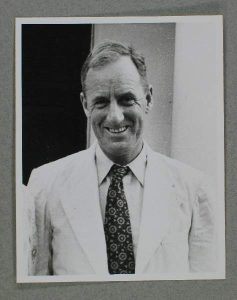
The two groups continued to meet mostly annually. In 1956 when Dr. Gault was on leave in Australia, he searched for and found a biochemist to fill an important position at the C.M.C. in the person of Dr. Ian Hansen from Adelaide. Dr. Hansen, a member of the Malvern Methodist Church in Adelaide accepted the appointment and with his wife Nola took up the appointment. The members of the Hansens’ Church at Malvern pledged strong support for them and this led to the formation in 1956 of an Adelaide Friends of Vellore.
Discussion took place before long as to whether there should be a coordinating body to bring together the support from the three groups in Sydney, Melbourne, and Adelaide, to streamline fundraising activities, the handling of finance, communications with Vellore and the appropriate care of visitors from Vellore, who included postgraduates involved in research or study. So the Australian Vellore Board came into existence later in 1956. The establishment of Friends of Vellore Groups followed in other cities; Brisbane in 1958, Perth in 1960 and Hobart in 1970.
The first meeting of the Australian Board of Vellore Christian Medical College was held on 10th July 1956 at 139 Castlereagh Street, Sydney. The meeting was chaired by Rev B.R.Wyllie. According to the minutes of the meeting, the chairman explained that the ‘the formation of the Board was at the request of Dr. John Carman, the Director of CMC & H, to co-ordinate the work done in Australia by the various FOV groups’. I was one of the founder members of the Board. In 1958 I became the Secretary of the Board and in 1968 took over the Chairmanship and held it until 1989. Alison Vickery came onto the Board in 1965 and Philip Slade in 1971. In 1976, Alison and Philip were elected as the secretary and treasurer respectively. They both served the board tirelessly and meritoriously in their respective capacities for more than 20 years. In 1989 Rev. Elizabeth Walker took over the chairmanship from me and held it till 1992. Rev. Brian Lee, from Brisbane was elected as the chairman of the Board in 1992. He was the first non Sydney-sider to become an office bearer.
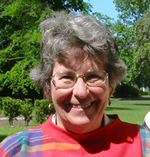
The reason for Sydney having been chosen as the base for the Vellore Board was that the three Mission Boards which contributed so much in money and in personnel all had their head offices in Sydney. These were the Methodist Board of Overseas Mission, the Presbyterian Board of Foreign Mission and the London Missionary Society (Congregational.) In the early stages and for many years we, the Vellore Board, were closely connected with and dependent in many ways on these three Boards. The newly established Vellore Board needed strength and so the first constitution specified significant numbers from Sydney for the ongoing work to be handled properly.
Looking back over the fifty years, the level of support to Vellore by the Australian Friends of Vellore is impressive It is often stated that in the late forties and fifties financial help from us played an important part, along with the help from USA and UK, in keeping CMC viable. Over that period of time, there have been special projects in which we were involved. Firstly, special support to endow the Chair of Pathology, obviously relating closely to the work of Edward Gault. Then there was the support in helping to establish and then maintain the Ida Scudder Low Cost Effective Care Ward, aimed at providing high quality medical care to the poorest of the poor. Since 2001 most of the money sent through the Australian Vellore Board has gone into the Centenary Endowment fund which subsidised surgical and other expensive treatments for patients from the Vellore area and also to establish scholarships. Some money also went towards the Ida Scudder Centenary building.
The role of the Board went beyond financial support. Many Australians over the years have worked at Vellore in various medical fields providing academic and clinical support. Edward and Edna Gault, Alison Vickery, Selwyn Baker, Ian Hansen, Marlienne Thomson, Frank Garlick, Val Rudeforth, Claire Heaton, Geoff Shead, John and Sally Rothwell, Virginia Blakie, Ellis Carlier, John Vance and myself, Reg Walker ? to name the ones I could recollect.
Some of these positions were fully funded from the Australian Vellore Board, some partly by the respective Mission Boards and some by Australian Volunteers Abroad. Others worked in a totally honorary capacity giving their services free and living on their savings. All of us who served at Vellore have loving memories of the concern, support and friendship which was extended to us, even when we visited Vellore long after we left. We also had the opportunity to share our experience at Vellore with the friends back home at various functions thus spreading the gospel of CMC in Australia.
But in recent years, Australia has been playing an invaluable role in providing post graduate training opportunities for Vellore staff. Adelaide has been the city where most of them spent their time of training.
When I was elected Chairman of the Board in 1992, it was the first time this position was held by someone living outside of Sydney. Although it was not seen as such at the time, it proved to be the beginning of a process of decentralisation of the Board. While there was some convenience in having all the Board’s officers in one city, the growing strength of other State Friends of Vellore groups and the development of better means of communication – faxes, telephone conferencing, then emails – made it easier for the Board to take advantage of the dedication and skills of Vellore supporters in places other than Sydney.
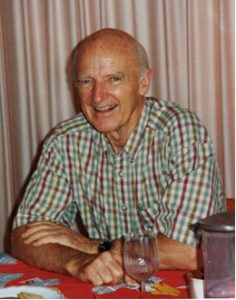
During 1997 and 1998 a great deal of work was done to gather together suggestions and recommendations from the State groups so as to bring about a new Constitution, approved in August 1998, which acknowledged this decentralisation. It was an interesting experience for me to be working with people who had strong and sometimes widely differing opinions about the shape of the new Constitution, but we did manage to produce a basis for significant changes which in no way limited but rather enhanced the work of the Board. For good reasons, this Constitution was further amended later, but the 1998 Constitution enabled this transition to take place. An official role for Alumni representatives on the Board was one of the significant changes. In most of the State groups Alumni were already valuable members and office holders.
Through the good work of Mr. Esdras Giddy and the Board?s Publicity Officer, a 20 minute video entitled ‘A Transforming Presence’ was produced by the Board and widely distributed. Though some parts are dated because of changes at CMC, this video will continue to be used until new material, making use of today’s technology, is produced by the Board. There were two earlier films made for promotional use, titled – ‘To children with Love’ and ‘Out stretched Hands’.
Over many years the Australian Board had supported a number of long term Australian staff members at CMC. The retirement of Miss Marlienne Thomson brought this era to an end. Already by the early 1990s it was clear that personal stories from Vellore would now come to us from local staff and through Australians working as short term volunteers or as visitors to CMC.
In my report to the 1999 Board I said, “The number of people who can describe themselves as ‘Vellore returned’ continues to grow, and these people provide us with a great resource – these are people who have experienced Vellore first hand, who have shared in its successes and have known at first hand its frustrating needs. Many of them are looking for opportunities to continue links with Vellore and many are prepared to support Vellore in one way or another.”
A disappointment to us all during those seven years was the folding up of the Western Australian Friends of Vellore group. The sudden and unexpected death of the Secretary/Treasurer of that group hastened that end.
The policy to have the Board decentralised continued with the election of Professor Ian Roberts- Thomson from South Australia as president in 1999. A driving force behind the Friends of Vellore in South Australia, Dr Rasiah Vigneswaran was the national publicity officer at that time. A new Constitution became operable from that year and further change was recorded in the minutes of the 1999 AGM noting the end of 24 years service of Philip Slade as treasurer, with Richard Caitens assuming that role, and 27 years of Alison Vickery as secretary with Stephen Aseervatham taking over that responsibility.
Understanding the different approach of the South Australian Friends of Vellore group to that of traditional fundraising, illustrates what a change in philosophy underpinned the new national leadership. Fundraising in South Australia focused on an annual dinner, but more importantly they had concentrated on developing relationships with the staff of CMC by providing training opportunities in a variety of specialties including gastroenterology orthopaedics, cardiothoracic surgery, paediatrics and obstetrics and there were in excess of 20 faculty and partners in Adelaide at any one time to engage with the FOV group. Presentations by the Vellore faculty contrasting their training in Australia with their plans for when they returned to Vellore became an annual event. This engaged the medical community in the FOV which re-energized the group to the extent that the annual dinner of nearly 500 regularly had to turn supporters away. It is perhaps significant to note that the new Medical Director in Vellore, George Chandy, had previously trained in Ian Roberts-Thomson’s unit in Adelaide.
The 2000 AGM highlighted the changing times. Ian began to tackle the issues of incorporation of the Australian Board and the emerging problem of groups requiring public liability insurance to cover their fundraising functions. Some of the traditional funding sources were no longer accessible for supporting the work in Vellore. A discussion paper by Dr Vigneswaran highlighted the changing needs of Vellore, which would see activities such as sending equipment and outdated textbooks replaced by professional engagement and support not only to train doctors from Vellore but also to encourage our medical students to do elective terms at Vellore, which would also ensure new blood was available to the FOV movement in Australia. It was at this time that Dr Vigneswaran established the first Australian FOV website, before he nominated me to succeed him as publicity officer.
CMC Vellore, by comparison, had had a very well maintained website for some time, and as an indication of the changing face of that hospital their Centenary was celebrated with the opening of a new building featuring, amongst other specialties, a very high technology neonatal unit.
In 2002 Ian Roberts-Thomson and I, from the Australian FOV, attended the 2002 International Consultation in Vellore to develop the next 10 year strategic plan. Not only did that event reflect their firm foundation in the healing ministry of Christ, but also highlighted their continuing desire to develop their tertiary specialties while recognizing their outreach responsibilities, not only to surrounding mission hospitals but also to stewardship of their environment.
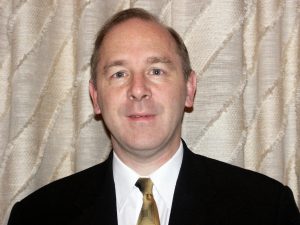
This Consultation was an important opportunity for the Australian Board to engage with CMC. In November 2002, Dr. Vigneswaran died suddenly. A strong supporter of FOV since the 1980’s he not only contributed to the great expansion of support for FOV in South Australia but had had a major role in the restructuring of the Australian Board and its constitution on more democratic lines. He was also responsible for strengthening the Board by involving the alumni. He lived to see the completion of a project earlier that year which he and his classmates, the batch of 1962, had initiated. That involved my training Dr Raju Chacko in Adelaide for 3 years so that he could return to Vellore and establish a medical oncology unit which was dedicated to the memory of Maureen Vigneswaran, also a graduate of CMC Vellore, who had died of cancer.
Ian Roberts-Thomson steered the Australian Board through the difficult issues of constitutional change, incorporation and indemnity through 2003 and 2004. The Board meetings rotated between the capital cities which allowed greater involvement of the members of the state groups. Ian had been a frequent visitor to Vellore which kept us very much in touch with developments there and George Chandy came to Australia in 2004 and 2006. George subsequently asked the Australian Board to take the lead in producing a new promotional DVD.
Rev. John Connan was elected president at the 2005 Board meeting in Melbourne. I reformatted the existing web site and Stephen Aseervatham, as the new publicity officer, took it to the next level of functionality. The DVD project which was completed in 2007 is symbolic of changing times and needs, which is the major challenge to the Australian Board.
Prof. Ian Olver took over from John Connan as the president in 2008 and held it until 2014.
He introduced teleconferences, 2 or 3 times during a year. Board of Directors plus the chairpersons of the State branches of the FOV took part in them. We found them were very useful in sorting out various issues as they presented rather than waiting till the time of the AGM as we did in the past.
The Board was able to make use of the facilities available at his office at the Cancer Council to hold the AGMs and the directors of CMC were able to attend via video link.
Ian was very keen to get the Australian alumni get involved in the affairs of the FOV. The Board believed that by holding the Australian Alumni gathering at the same time as the AGMs, it would encourage the alumni to become active. It was tried once at the AGM held at Darwin in 2013. Unfortunately, it did not work out well for various reasons.
He also tried his best trying to establish state branches of FOV in Northern Territory and Western Australia. Even though in the beginning there was some interest by a few, soon it became apparent that there was not enough enthusiasm or numbers to make it a viable proposition and sadly the idea fizzled out eventually.
A second promotional video ‘Our Stories, Our CMC’ was produced by CMC in June 2015; Tim Nicholls the Australian producer who did the previous one and his team were again involved in it. It consisted of 10 short episodes of the various aspects of the life at CMC including one about Ida Scudder and her story. We contributed partly towards the cost of the production.
Ian regularly attended the January council meetings at CMC. He found representing the Australian FOV at the meetings in Vellore emphasised the value of the relationships we have built with CMC over the years because of the number of Vellore graduates who did post graduate training in Australia. Most of them were in Adelaide.
Bella George (2014 ? 2017) took over from Ian Olver. She was the first CMC graduate to be elected to the position of the president of the Board. There were also quite a few alumni among the Board of Directors and Executive of the state branches of the FOV. It was the general opinion that the future of the FOV depends on active participation by the CMC alumni in Australia.
Even though many of the alumni were not involved locally with their respective state branches, they were quite generous with their support to CMC by contributing towards various projects sponsored as a group by their classmates living worldwide. They also responded to special appeals by the institution.
Queensland was generating a tidy income from their street stalls where the elderly ladies from the Qld FOV sold homemade jams, pickles etc in the Brisbane CBD pavement stalls. This money came handy to the board for their general expenses. Unfortunately, due to legal actions taken by the city council, the stalls were closed in 2020s.
Stephen Aseervatham (2017 – 2023) took over from Bella; he is also a CMC alumnus. Prof David Runia was elected as the vice president. But later he took over as the secretary.
The past six years has been quite an unusual period for various reasons.
COVID epidemic had a great impact on our activities. The state branches could not hold their annual fund-raising dinners. The AGMs of the Board for the years 2020 and 2021 were held via zoom. In 2022 it was a hybrid one, which probably may become the normal in the near future. The CMC Directors naturally could not attend in person but were able to participate via the same media.
Surprisingly we did well with our fund raising. We were inundated with donations from many unknown sources around the country including Indian expatriates. We received almost Million dollars towards the management of COVID at CMC. The institution was very appreciative of what we were able to send them. Interestingly, even though we didn?t expect the new donors to continue to support, we were pleased to receive continuing donations from a few.
Few changes were made regarding how we handled the transfer of funds we received. In the past, as a rule we sent all the donations we received to Vellore, and it was up to the administration to use it for whatever purpose they wish to allocate. Certain new rules imposed by the Indian government regarding funds transferred from foreign countries made us change our practice. It was made mandatory that every dollar we sent has to be accounted for and shown going towards a particular designated cause. Thus, in consultation with the directorate we decided to transfer just enough to cover for the anticipated designated donations during the year. We were able to accumulate a considerable amount of money in our reserve which we transferred whenever there was a request from CMC towards an urgent specific need. Our funds became very handy for CMC as we were able help them when they needed quite a large amount for equipping their ICU during the first wave of COVID crisis, later during the third wave when the institution was short of income and also help them with the vaccination campaign.
We also started getting requests from individual departments to help them with some project which was approved by the administration. Some we financed on our own and with others we did it in collaboration with UK and USA FOVs. Few of the projects we helped were – setting up a Mobile Eye Unit, Equip the Kotagiri Pathology Lab, and Jawadhi Hills community outreach programme.
We were made aware of the need of many students who were unable to meet the cost of education at CMC. We were able to provide scholarships for needy students in both Allied health as well as Nursing Colleges. This has been very much appreciated by the recipients. For quite a few years we have also been supporting senior as well as junior staff of the faculty when they go on study leave abroad.
The Board recognised that there were a few matters which required our attention. We were aware that our current constitution was quite dated and did not reflect our current practice. A new constitution was drafted and approved by the Board a year ago. A new publicity brochure has been produced and just released. The last one we had was produced more than 20 years ago. Lots of credit goes to David Runia for all his hard work. He is also involved in helping with the new web site we are in the process of setting up. The current website is very basic, and we felt that we need a revamped one to make it appealing and informative. We hope it will be up and running in the new future. A long requested National Newsletter from the Board was published for the first time two years ago and thanks to the hard work of Sharon Thomas our publicity officer, it is regularly produced annually.
Almost couple of decades ago, at the request of the then CMC Director, we contributed a large amount towards building a retreat centre for the use of staff and students at a place called Yelagiri. Unfortunately, nothing happened all these years. Fortunately, in late 2019, the then Director J. V. Peters realised that the money we contributed has been kept in reserve unutilised and with our permission initiated the building process. It was a surprise to everyone when they found that the money, we sent has cumulated with the compound interest and was a sizable amount. The building process has been progressing slowly, and we are waiting to hear more about it.
The Board has been involved in supporting the two new campuses, at Chittoor and Ranipet, from the time they were established. There have been quite large donations from Australia especially to the super speciality hospital at Ranipet. There was a large endowment from a South Australian Family Trust which went towards the ?The Golden Hour Emergency Care?. The Board contributed towards ICU Ambulances, ICU Equipment and COVID Management. We are glad that with the reserves we have built up, we were in a position to help CMC at the time of need.
Our state branches of FOV have been busy with their activities and annual fund-raising campaign, probably not to the same extent as in yesteryears. The loss of the street markets in Brisbane was a crying shame. Sadly, many of our active friends have moved on because of their age and some of them are not with us anymore. Queensland, Victoria, and South Australia have managed to keep up the membership numbers, to a certain extent. The NSW branch has dwindled quite dramatically and not as active as it was in the past. Regrettably the Tasmanian branch has ceased to exist a few years ago. We really need the alumni to become more involved in the affairs of FOV if we are going to survive.
Over the past few years there have been closer contacts with the other international FOVs. Usually, we get to meet the delegates from various countries when we attend the January council meetings at Vellore. But we also started having zoom meetings 3 times a year and it gives us the opportunity to share news about our respective organisations. The Director of CMC as well as other associate directors also attend these meetings which have become very productive.
| Chairmen | Vice Chairmen | Secretaries | Treasurers | Publicity Officers |
|---|---|---|---|---|
| Rev. B.R. Wyllie Dr. Reg Walker Mrs. Elizabeth Walker Rev. Brian Lee Prof. Ian Roberts-Thomson Rev. John Connan Prof. Ian Olver Dr. Bella George Dr. Stephen Aseervatham |
Dr. Reg walker Dr. E.W.Gault Rev. B.R. Wyllie Dr. Felix. Arden Rev. Ellis Carlier Mt. Stewart Joy Dr. Ian Roberts-Thomson Rev. John Connan Prof. Ian Olver Dr. Bella George Dr. Stephen Aseervatham Prof. David Runia Dr. Mahiban Thomas |
Mrs. Dorothy Larcombe (Joske) Dr. Reg Walker Prof. Alfred Steinbeck Dr. H. Malcolm Whyte Rev. B.R.Wyllie Ms. Alison Vickery Dr. Stephen Aseervatham Dr. Jeanette Hyland John Rothwell Ms. Liz Guiver Ms. Evelyn Lehmann |
Mr. Eric Gifford Mr. Ian Pearson Mr. Philip Slade |
Rev. W.S. Chaseling Mr. K. Allen Mrs. Olwyn Swain Mr. Stewart Cuddy Mr. Edmund Walker Dr. R. Vigneswaran Prof. Ian Olver Dr. Stephen Aseervatham Dr. Chellam Kirubakaran |
The Friends of Vellore (FOV) groups have been in existence for almost 60 years. Currently there are active groups of FOV in various states of Australia – New South Wales, Victoria, Queensland, and South Australia. The groups in the different states are located in the capital cities and they work throughout the year in various ways to support Christian Medical College and Hospital at Vellore.
The Australian Board of Vellore Christian College and Hospital was established in 1956 to co-ordinate the activities of the various state branches of Friends of Vellore. For many years the board was based around the Sydney Friends of Vellore. Over the years, the Board has evolved into a truly national organisation with representation from various states of the country.
Ida Scudder founded The Christian Medical College and believed that it was a calling and a challenge set before her by God to begin a ministry to the health needs of the people of India, particularly women and children. Today the CMC is now one of the leading institutions in India, known all over the world for its excellence in clinical care, medical research and education.